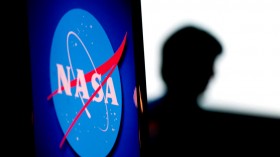Archaeologists in Japan have made an exciting and not to mention baffling discovery. In the ruins of Katsuren Castle located in Uruma, Okinawa, ancient Roman coins dating back to the 17th century have been uncovered. Does this discovery show a link between the Japanese and the Romans?
"It is a strange and interesting find. We don't think that there is a direct link between the Roman Empire and Katsuren Castle, but the discovery confirms how this region had trade relations with the rest of Asia," stated Masaki Yokou in an exclusive report by CNN.
Since the excavation that began in 2013, approximately ten coins have been uncovered. Six of the ten coins reportedly date back to 400AD. Additional reports add that each coin measures 0.6 inches to 0.8 inches in diameter.
"I'd come to analyze artifacts like Japanese samurai armor that had been found there when I spotted the coins... I'd been on excavation sites in Egypt and Italy and had seen a lot of Roman coins before, so I recognized them immediately," stated Toshio Tsukamoto, a researcher from Gangoji temple cultural properties department who had first discovered the coins.
The copper coins found at the Katsuren Castle, a UNESCO world heritage site, are said to bear the image of Constantine the Great. These coins were excavated by the local board of education, and that the coins hint that Japan had indeed wide trade ties with the Romans.
"Okinawa's trade with China and Southeast Asia was thriving at the time and the finding is 'precious historical material suggesting a link between Okinawa and the Western world," stated the board of education in a report by The Japan Times, adding, "Each coin measures 1.6 to 2 cm in diameter. The designs and patterns on both sides are unclear due to abrasion."
Aside from the Roman coins dating back from the 12th and 15th century, one other coin was excavated at the castle. This coin is said to date back from the Ottoman Empire. The Roman coins are currently on display at a museum located in Uruma and will be analysed further until the end of November.
© 2024 NatureWorldNews.com All rights reserved. Do not reproduce without permission.





